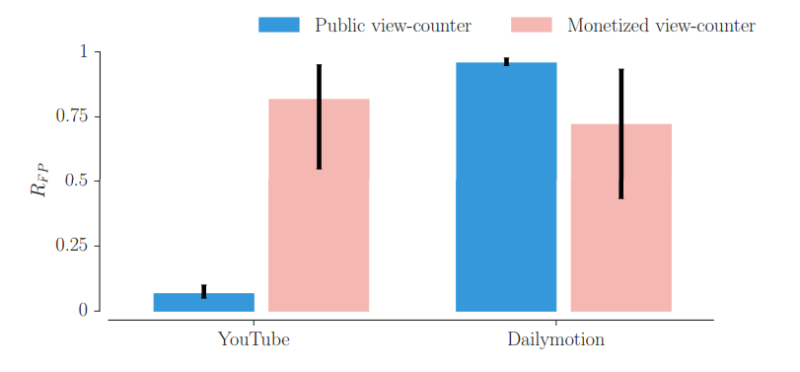Study Finds YouTube Advertisers Pay For Bot Views
Researchers show that AdWords advertisers are charged for ad views that have been flagged as fraudulent by YouTube systems.
More alarming news on the advertising fraud front. A new study raises questions about the reliability of the way advertisers are charged for ad views on YouTube. A team of European researchers claim their experiments show that advertisers are charged even when YouTube’s systems flag a view as coming from a bot rather than a human.
The experiment, carried out by researchers at NEC Labs Europe, UC3m, Imdea and Polito, was three-pronged: the researchers uploaded videos to YouTube and set up an AdSense account to monetize them; they then set up AdWords accounts to run ads against the videos; they created and deployed bots to view the videos with the ads.
While the researchers concluded that “among the studied online video portals, YouTube is the only one implementing a sufficiently discriminative fake view detection mechanism,” they also found “that YouTube only applies this mechanism to discount fake views from the public view counter and not from the monetized view counter.”
They observed that throughout the experiment, the number of monetized views was larger than the number of counted views, and “views considered suspicious are removed from the public view counter, but monetized.” Advertisers are charged in AdWords for views despite the fact that YouTube has already flagged them as fraudulent.

Comparison of false positive ratio for the number of views in the public and monetized view counters for YouTube and Dailymotion.
When similar scenarios have been brought to YouTube’s attention, the study explains, the company has said that the discrepancies may be due to users watching the video ad but not the video itself, so the view is monetized but not counted by the public counter. However, the researchers say that’s not what happened here because the bot software was programmed to “watch” both the ads and the videos through to completion.
The researchers also considered that YouTube performs part of its view validation after the fact, rather than in real-time. Yet, six months on, the team observed no compensation adjustments. That’s even after YouTube suspended the AdSense account after flagging the bots’ suspicious activity.
YouTube is also susceptible to relatively unsophisticated attacks, the study finds. The team says they have brought their findings to Google and plan to continue to refine the tools they used in the initial study and potentially make them available to the wider community.
A Google spokesperson said, “We’re contacting the researchers to discuss their findings further. We take invalid traffic very seriously and have invested significantly in the technology and team that keep this out of our systems. The vast majority of invalid traffic is filtered from our systems before advertisers are ever charged.”
The Association of National Advertisers released a massive study on bot fraud in December 2014 that found that, on average, 23 percent of video ad views are fraudulent.
Hat tip: Financial Times
Contributing authors are invited to create content for MarTech and are chosen for their expertise and contribution to the martech community. Our contributors work under the oversight of the editorial staff and contributions are checked for quality and relevance to our readers. MarTech is owned by Semrush. Contributor was not asked to make any direct or indirect mentions of Semrush. The opinions they express are their own.
Related stories
New on MarTech
